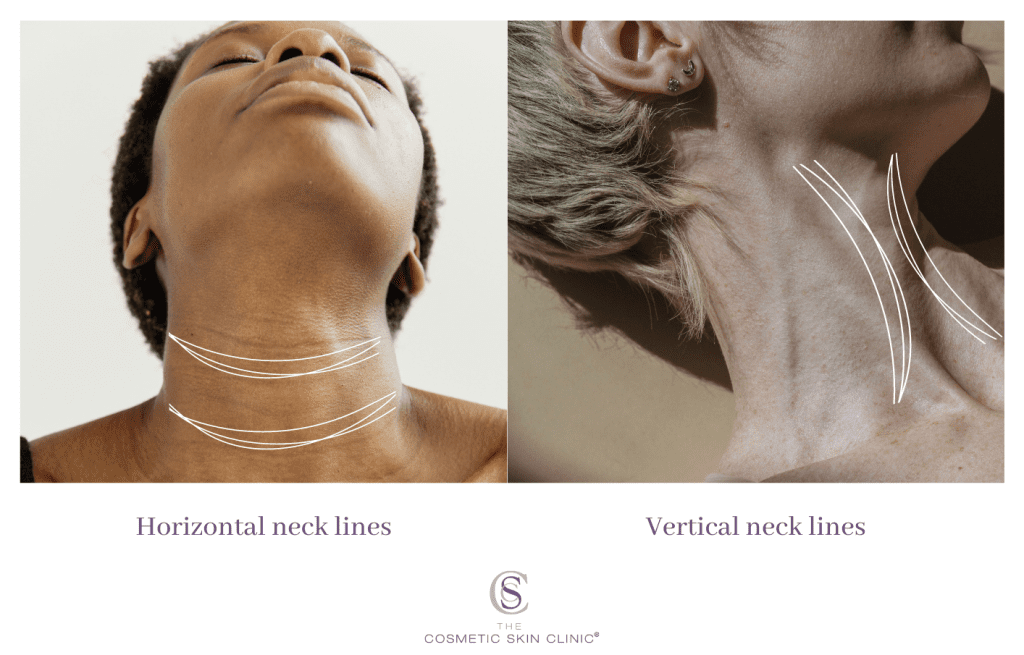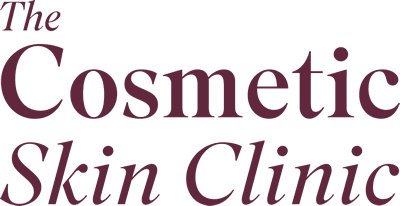Journalist, broadcaster and beauty writer, Sali Hughes asks The Cosmetic Skin Clinic’s Dr Joanna Christou all your injectable questions in this informative Instagram live session.
How do Dr Joanna Christou and Sali Hughes know each other?
When it came to this talk, Sali Hughes has a number of doctors volunteer to answer questions, but Sali wanted a doctor that she trusted to put a needle in her face to talk about this and therefore could vouch for. Enter, The Cosmetic Skin Clinic’s Dr Joanna Christou.
Sali reveals that Dr Christou has done her Botox on a number of occasions and that she fully trusts her with her own face.
Botox and Dermal Filler are mistaken as the same thing, can you explain the difference?
Dr Christou explains that both Dermal Filler and Botox are injectable treatments, but “fillers are used to replace volume loss on the face. So, where there is a changing contour through loss of fat pads with age, we would place a filler to create structure and support. So, it’s something that is a completely natural molecule because we have hyaluronic acid in our body and that’s what filler is. And you replenish this sort of structural support on the face to create that, that lift and that contour which we see in youth.”
For muscle relaxing agents, Dr Christou highlights that there are many brands of this and in fact it is simply “purified protein injected to stop muscle movement or control muscle movement.” Botox does this by “blocking a nerve, essentially that contracts the muscle in the same way that a dental anaesthetic will block a nerve from feeling pain.”
Wrinkle relaxing injections are used “where there are dynamic lines, lines on the face associated with muscle contraction and movement”, says Dr Christou. She also reveals common Botox areas “are often the upper part of the face in the glabella, the forehead, around the eye, but we could typically use it in the mentalis in the chin, down the neck too and there’s lots of very clever things we can do with muscle relaxants.”
What does Gummy Smile mean?
A gummy smile is when the “lip elevates too much when you smile, and so the tooth to gum ratio is disproportionate or unfavourable”.
What makes the perfect smile?
“So, a textbook perfect smile was when the lip elevates enough to see the crown of the teeth and just the first little bit of pink of the gum and no more than that. And that’s what’s considered the most aesthetic smile,” says Dr Christou.
How does Dr Joanna Christou handle a request to tweak a gummy smile?
Dr Christou reveals she does get requests for gummy smile treatment, and that “a lot of people do assume that relaxing the muscle and it would be an injection” on either side, however there are a lot more factors to consider.
For instance, Dr Christou says, “sometimes structuring the lips with filler is in fact more appropriate and sometimes it’s dental work, so sometimes it’s actually related to the position of the teeth, and that would therefore be the most appropriate route to go down.” For this, the most appropriate route is to go to an aesthetic practitioner or a dentist, which are both Dr Christou’s passions.
What does Dr Christou recommend if someone is worried about a gummy smile?
Dr Christou suggest as a first point of call, “maybe ask a dentist to check that the teeth are in a correct position, because if they’re not, there could some dental implication of, are the teeth wearing out? Is there an overbite that’s going to be a problem long term?”
How do you find the right Botox practitioner?
Dr Christou would go to someone who is a doctor, a dentist or a nurse. She says that the basic starting point in the UK is that “people who have these professional registrations are registered on a public register. You can find them online, so you can verify that very easily.”
Her next step would be to look at their level of experience. How many years have they been doing this, “are they quite importantly doing this full time or are they doing it on the side and dabbling in it for a little because, there is a big difference with someone who is focusing on aesthetic, making that their career.”
An additional point that may be harder to find is “your personal preferences.” Dr Christou explains that “aesthetic is fact, you know, founded in science, but it is also an art, and every single practitioner has their own flair, their own style, their own ethos or treatments. And that’s something that’s really hard to sometime pick up.” It is difficult to see this through websites, social media and patient testimonials. You need to ask yourself the following questions says Dr Christou:
- “Are you looking for a really kind of light natural result?”
- “Are you looking for something that’s a little bit more of a statement piece and that comes down to individual flair?”
Once you find the right practitioner, you can go from there and build a really good relationship. Remember, it’s about meeting people, having consultations, getting a sense of the language they use, “how do they assess you, what do they recommend as your treatments and things like that.”
What is Dr Joanna Christou aesthetic style?
When it comes to choosing a practitioner, you need to take all the above factors into consideration. Professional qualifications and experience are important but it’s also important to find the right practitioner who will match the aesthetic style you want. Dr Christou reveals her style is “very natural, very light, so I like things to look, you know, confluent with your own normal anatomy. So, you just look a really healthy, refreshed version of yourself, but not different in any way.”
She understands her style may not suit everyone but that is perfectly fine as she truly believes her “light kind of form of aesthetics” is right.
Therefore, she explains people “who have the same belief pattern as me, we work beautifully together because we have the same understanding on these things.”
What example of a red flag is there when it comes to getting a treatment?
Sali raises a valid point that when you go to a clinic and you talk to someone regarding the treatment you are going to have, in her opinion, “that person should be the person who is giving you the treatment.” Dr Christou agrees that you should have your consultation and questions answered by the practitioner giving you the treatment. If you end up having a consultation with a salesperson or receptionist, this is a red flag.
Can having Botox around the forehead and crow’s feet make under eye bag creases worse?
Speaking in general terms, Dr Christou says, “as a rule without the muscle relaxant” it can be assumed you already have lines under the eyes and that’s why you have the treatment that you have. By relaxing the lines on your forehead and crow’s feet, can by comparison make the lines under the eyes look odder.
Dr Christou succinctly explains that it’s a bit like when you paint a house. “If you paint just one room, the other rooms look a bit more tired, and it shows up a bit more. Same thing on the face. If you over treat one area, the things that were already there in pre-existence prior to treatment can kind of show up a bit more and this is very important.”
What would be Dr Christou’s approach to this concern?
She takes a 360* approach by doing a full face and neck assessment, because there is not just one really obvious treatment. She says, “it needs to be a little bit holistic and a little bit softer.” She emphasises the need for movement so “the muscles are working kind of more smoothly and in conjunction with itself rather than having one section completely paralysed and the other section having to work a bit harder or looking, you know, more harsh. It’s like it’s hitting a brick wall.”
The next step would be to look at volume loss and assess if there is any actual laxity in the skin. In the example Sali gave, Dr Christou says, “there’s lot of factors to consider there” and that based on the description, she would “go slightly softer around the eyes and just see if that sort of suits you better.”
What are your thoughts on filler in tear troughs?
Dr Christou says she thinks “filler in tear troughs is overused. I think as soon as someone has a dark circle under the eyes, the automatic assumption is, let’s put a bit of filler and it’s not always the right treatment.”
When doing filler under the eyes, Dr Christou is incredibly conservative. The reason for this she explains is because “we don’t often lose a huge amount of volume under our eyes. Often, it’s actually the ligament that’s a problem or thinning of the skin.” The under eyes are a very complicated area of the anatomy.
What happens if filler is injected but volume loss wasn’t the issue?
If the issue isn’t anatomical volume loss, then you can worsen the appearance of tear troughs making it look bulky. Dr Christou says “you could get what’s called a Tyndall effect where the light reflects badly off the area and makes it look darker and blue. And I see that quite commonly. I do quite a lot of corrective work, so that is something that I’m very aware of because I see that coming into the clinic.”
Can filler help with tear trough volume loss and look good?
Yes, it can. If there is volume loss and filler is conservatively and well placed “at the right depth” it will refresh and hydrate the area. The practitioner must be an expert in order for it not to be obvious or bulky.
Has Dr Joanna Christou had tear trough filler?
Dr Christou says “I don’t mind admitting I have a bit of filler under my eyes, and I do still have a little bit of a contour, a little bit of tear trough there, but without it I just have a bit of a shadow, a bit of a darkness. My eyes look a bit more drawn and a bit more tired and with it I still have that shape because it’s normal for a 40-year-old to have a little bit of that.”
She highlights that there’s more brightness and light reflects better because the contours are slightly better. It’s all very subtle yet understated.
Can someone be resistant to Botox?
Dr Christou remarks that it is academically possible “to build a resistance in terms of the antibodies in our immune system. But in practical terms, the number of people that that actually happens too is infinitely small.” For those who have had muscle relaxant over several years, in the early years they see it working fast, lasting a very long time and just being effective, doing its job. However, over time our skin loses elasticity, our face loses volume, and our bones lose density.
“If you continue to use muscle relaxants without addressing these other areas of anatomy, you’re not going to get the same result because you’re using the wrong tool for the job,” says Dr Christou.
Its job is to be a muscle relaxant, not replace fat, tighten skin or all those other things. If you “did one of these other modalities of treatment, you then find your toxin is much much more effective because” … “the muscle now has its support and it’s anchoring and its scaffolding underneath when you put the toxin in muscle it works much better because the mechanics and the support of the muscle are there.”
Essentially it is all multifactorial. So, it may not be a genuine resistance and the solution may be to try a different brand of treatment which has worked for Dr Christou’s patients.”
For frown lines (or 11 lines), do people need Botox or filler?
Frown lines are dynamic lines, so it is about muscle contraction. The best first step is absolutely to relax the muscle with toxin. If the frown lines are intense over a long period of time and now you have a static line (a groove that is visible even when the muscle is relaxed), then filler plays a role here.
Dr Christou warns that you “don’t want to fill the area while the muscle is still contracting really heavily because it can create bulk and lumps and things like that. So, the starting point is still relaxing the muscle, but then subsequent to that you can just sort of underpin that frown with a little bit of filler just to lift it back up and that filler actually will last a long time.”
Meanwhile, you can do a couple of muscle relaxing treatments so, by the time the filler wears off the muscle is “kind of under control and that line never comes back.”
Can you get both filler and Botox on the same day?
Yes, you can. Dr Christou’s preference is to relax the muscle first, then come back to see the results, the effect. And then as a secondary decision, decide if we need filler.
Can jowls be fixed with injectables or is a facelift the only option?
It is dependent on the extent of the jowls. For instance, a very heavy jowl can be difficult to treat through non-surgical means. So, a surgical lift followed by strategic placement of filler to contour the face is a nice route to go, or a mini lift surgically.
“But you would be surprised with what we can achieve non-surgically,” says Dr Christou, “because a lot of people don’t want to go under the knife nowadays, so their first point of contact is often a non-surgical practitioner. And we have skin tightening treatments, we have threads and combining that with filler and maybe a bit of toxin can go a very long way in lifting up jowls.”
With the chin area there can be a little bit of fat underneath, so CoolSculpting can be effective at taking the weight off so we can lift the area.
There would be a need for a combination of treatments, and these can be done non-surgically, as when it comes to treating jowls the anatomy is complicated and will need more than one treatment.
Dr Christou says you should “speak to a practitioner, see what they suggest and if they’re, you know, thinking that surgery is the only route for you, then hopefully they’ll be honest and they’ll say that to you from day one rather than take you down a path that then doesn’t give you the result you’re looking for but really, it’s case by case and dependent on individuals’ kind of goals and what they’re willing to do as well.”
However, a lot can be done non-surgically, because nowadays a lot of people don’t want to have surgery. They simply don’t want to go under the knife.
How often is the case of people getting injectables to lift their eyebrows, but they’ve been pushed down?
In the wrong hands this can be common. In the right hands of a qualified and experienced practitioner, your face will be correctly assessed, and the use of toxin is intelligently placed, so it shouldn’t happen.
Dr Christou says “if you do have a heavy brow, it’s unfortunate and you do just to wait it out until it wears off and then maybe find a different practitioner thereafter, just someone who can kind of approach it slightly differently, some a little more softly, so that you avoid that. Again, everyone is different in the doses that they need of toxin, and some people are very, very sensitive and they catch you by surprise. So, uh, normal dose of toxin on. Some individuals are just way too heavy and when I meet someone for the very first time, I’m just super light just to see kind of what the response is to avoid that.”
Dr Christou finds with her patients; she rarely gets a drop because her particular style is very risk averse. This is more her nature and therefore her practice of aesthetics is the same way.
What other reason do people get a drop with their Botox?
A drop can happen when what they need is filler in the upper face. The drop is to do with volume loss through the forehead and in the temples because this is the “scaffolding for the upper part of the face and if the muscle isn’t supported” … “it could drop with any amounts of toxin,” says Dr Christou.
She also suggests to avoid a drop in the brows it is worth considering that you might “need to lay the foundation 1st and put a bit of filler into possibly the temples or the forehead before you can have your muscle relaxants.”
My lips have really started losing shape and density. Is it possible to have lip filler that looks natural?
Yes, it is definitely possible to do very natural lip filler. It is all dependent on what the patient’s goal is with this treatment. For instance, patients say they are losing volume in their lips and want that plumped up, but in fact they don’t like the appearance of lines which filler can fix.
The issue is the amount of filler used to treat those lines is too much, and in other cases it can be other reasons. Dr Christou reassures you that “lip fillers can look very, very natural. So, it’s hard to detect, though, isn’t it because you can’t see the good stuff.”
Is it true that toxins can wear off more quickly if you exercise several times a week?
In theory that can be true and in Dr Christou’s experience it is true too. She says, “the patients who I treat, who are athletes or for example, have an overactive thyroid, their metabolism runs very high. OK, yeah, there are some cases like that where the treatments just don’t last as long, and if that’s something that is sort of your internal physiology, there’s nothing really you can do treatment wise to counteract that because what you don’t want to do is put a heavier dose or a higher dose of toxin, have a result that doesn’t look great but then also wears off.”
“We don’t really have an awful lot of evidence around this because there hasn’t been a lot of research on it, so I can’t quote you anything formally, but certainly in my experience I would say that that probably is the case.”
Is 28 too late to start with tweakments?
Dr Christou says “there is a lot to be said for starting up early. When I mean early, I mean kind of in your early to mid-30s. Some people earlier than that do have dynamic lines that are starting to form and so I have treated people in their late 20s, but I wouldn’t treat younger than that.”
If you have lines younger than that, then you should consider factors such as dehydration or your skincare.
“But yes, if you start early, uh, very light, intelligent treatments mean that you sort of age well rather than allowing things to set and then try to, you know, regain it back. So, I’m, I’m a strong advocate for that. I mean I was 27 when I had my first treatment and that was just in the frown at that time. Yeah, I actually had quite an intense frown at that time. So, I’ve been having a toxin for a while and as a result of that, I look like, well, quite a fresh faced 40-year-old so, but I don’t look like I’ve had anything done because it, you know it all moves and I look appropriate” … “But the danger is you don’t want to start to set up a pattern of belief and behaviour that thinks you should have treatment for everything.”
“This is why it is important you trust your face to be in the hands of a very ethical practitioner who will rightfully say no to treatments that are not right for you. You can start early as long as you do it correctly, conservatively and appropriately.”
How does Dr Joanna Christou embody being an ethical practitioner?
She challenges her young patients, revealing she “checks their motivations and how they’re sort of feeling about the treatment and feeling about themselves. And if I think they’re going too far, you know, I sort of build enough trust in the relationship that if I say actually I think you’re over thinking that or I don’t agree with that treatment, they do listen to me, thankfully so.”
Dr Christou says, “I think if you’re going to pursue treatment before you’re 30, by all means do. But find a practitioner who’s really reputable, who knows what they’re doing, who you can trust and build a relationship with over time.”
If I stop using toxin, will there be a permanent change I can’t undo or reverse?
Dr Christou says, “there’s a point at which when you stop using toxin, the muscles will regain their strength and you’ll basically go back down to baseline as if you’ve never had it. But how quickly that happens depends on how long you’ve been doing it for. So, if you’ve only done it once or twice, you decide that toxin isn’t for you. You’ll revert down to your baseline very, very quickly.
If you’ve been doing it for years and the muscles are not as strong as they used to be, even after the toxin wears off there will still be an impression of the treatment being there and effects there because the muscle is in a relaxed state. As those months and years go on following the final treatment, you will absolutely just hit baseline again at a certain point.”
Does Botox work on neck lines?

Vertical neck lines appear due to a specific thin muscle called platysma in the neck that can be treated with toxin. Dr Christou explains “if you relax that muscle, you get kind of a bit of a lift. So, it helps with defining the jawline and it helps with just sort of springing up this area here, so it deals with lines like that.”
Horizontal neck lines are different in that they have more to do with the underlying anatomy rather than the muscles, therefore toxin is less effective but can still help. These lines are better treated with Profhilo or Teoxane RHA 1 which are light hyaluronic acids because we don’t want to add any bulk on the neck.
“What you don’t want is a line of filler that sits across the neck where the line is gone, but then you’ve got a sausage of filler in the neck, so you need to use a very, very delicate, very light product that will sort of diffuse into the area and condition the skin rather than volumises,” says Dr Christou.
Do you get patients who prefer Profhilo over Botox or Filler?
“I really love Profhilo. I think it’s quite unique in its behaviour and I use it a lot every single day in clinic,” states Dr Christou.
Many people come in wanting Profhilo while making a point that they will never have a toxin or filler. Dr Christou finds it interesting from her experience, the driver behind the preference for Profhilo is that it is seen as a very natural treatment that won’t change the face. “Whereas there’s a certain amount of fear related to toxin and filler in that regard,” says Dr Christou. These fear related notions are based on preconceived ideas from seeing past bad treatments. All myths and fears are addressed in the consultation to ensure patients know their options.
Profhilo stands out as it is in the category of “skin health, collagen boosting, elastin production because it won’t add volume, it won’t change the shape of your face, it won’t affect how the muscles contract and move. It’s literally about getting hydrated, healthy, fresh skin. It will deal with the fine lines on the surface, but it won’t replump, lift and support the face.”
How is Profhilo as a standalone treatment?
It is fantastic as a singular treatment and is a popular treatment for Dr Christou’s younger patients. As a lot are focused on banking collagen and see this as an investment in ageing well. Profhilo sits in the category of being a great treatment for a younger patient. However, it is also great for older patients who have crepier skin. For older patients, they may need both Profhilo and Filler to create that underpinning and support. Depending on how you respond to Profhilo, most require maintenance and top up treatments.
“Most of my patients do it once every 6 to 12 months and it does depend on, as I say, what other treatments they’re doing and what is their main goal for that treatment,” says Dr Christou.
Why is Profhilo popular?
It’s the newest injectable and Dr Christou is a big fan. She says, “There’s always fillers coming out and but they’re all ultimately about volume replacement, whereas Profhilo is purely about, you know, collagen stimulation and elastin growth and things like that so it’s very unique in the way it behaves.”
A friend had her crow’s feet treated with Botox and it gave her bags under her eyes. Will they go once the toxin wears off?
Bags under eyes can occur when the area has been over treated because the contraction of the muscle on your outer eye area is involved in lymphatic drainage of the fluid from under the eyes. Dr Christou says, “if you over relax this muscle and the fluid therefore cannot be released, then you can get very puffy under the eyes.”
Usually, the person who is affected by this tends to have a puffy upper eye area, so “just check there isn’t a heaviness up there as well, but it will completely resolve once the toxin wears off.” This is not a permanent treatment so in the meantime, the person can do a very gentle lymphatic massage – simply apply a light eye cream and massage from the inside out.
Dr Christou says, “The lymph node drainage is always on the side of the face, so if you just sort of draw the fluid away, you can kind of encourage that mechanically to clear because the muscle can’t do it itself. And cold compresses very helpful in that case, and sleeping slightly elevated, so put an extra pillow under the head because if you allow gravity during the night to help drain the fluid.”
Some people are fluid prone, and it has to do with bones, hormones, diet, hydration, and a number of other things. The above suggestions can help with that.
What can be done for those who are frightened of possible pain when it comes to facial injectables?
Pain is incredibly subjective, so how one person may find it is not always the same for someone else. So, Dr Christou always offers anaesthetic cream, and some will take it for every single treatment and others choose not to.
It’s essentially about what is right for the individual. Dr Christou explains that as they are medical grade treatments, it is not a “relaxing, pampering facial. Unfortunately, there is some degree of discomfort.”
However, the treatments are not unbearable with Dr Christou reassuring that she has never had to stop a treatment for anyone ever. The solution to this concern is a good practitioner that will manage the pain or discomfort concern for you. The core of your experience is to feel you are comfortable and well looked after making it less stressful.
The Cosmetic Skin Clinic
Dr Christou’s ability to tackle complex facial revisions is thanks to her vast experience as a dual qualified dentist and medical doctor. As well as her years of experience, strong education, she has a special interest in facial musculature and is always on hand to answer questions.
She is one of the best in the aesthetic industry thanks to her unique knowledge of the face structure, combined with “her mastery of fillers for complex facial revisions” allowing her to create unique yet natural results.
Founded by Dr Tracy Mountford, The Cosmetic Skin Clinic continues with her successful ethos of taking a holistic approach to create bespoke yet natural results. This involves combining decades of aesthetic knowledge, experience and innovative technology. As a CQC registered, multi-award-winning clinic, you can trust our highly experienced practitioners to make you look like you but fresher and youthful.
To book your injectable consultation or contact our London or Stoke Poges, Buckinghamshire clinic call on 0330 134 2751.
Source: Instagram / September 1st




















